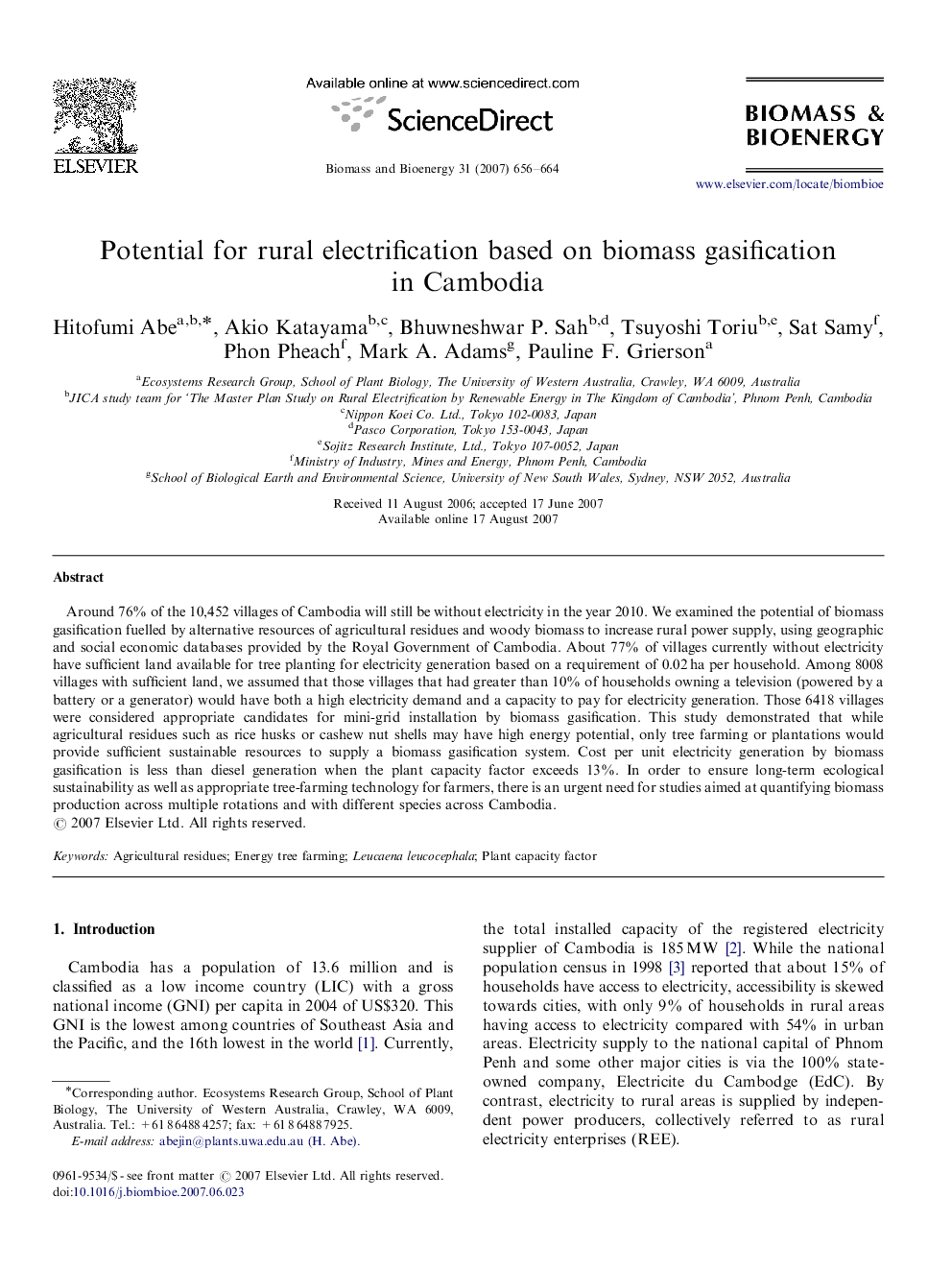| Article ID | Journal | Published Year | Pages | File Type |
|---|---|---|---|---|
| 678888 | Biomass and Bioenergy | 2007 | 9 Pages |
Around 76% of the 10,452 villages of Cambodia will still be without electricity in the year 2010. We examined the potential of biomass gasification fuelled by alternative resources of agricultural residues and woody biomass to increase rural power supply, using geographic and social economic databases provided by the Royal Government of Cambodia. About 77% of villages currently without electricity have sufficient land available for tree planting for electricity generation based on a requirement of 0.02 ha per household. Among 8008 villages with sufficient land, we assumed that those villages that had greater than 10% of households owning a television (powered by a battery or a generator) would have both a high electricity demand and a capacity to pay for electricity generation. Those 6418 villages were considered appropriate candidates for mini-grid installation by biomass gasification. This study demonstrated that while agricultural residues such as rice husks or cashew nut shells may have high energy potential, only tree farming or plantations would provide sufficient sustainable resources to supply a biomass gasification system. Cost per unit electricity generation by biomass gasification is less than diesel generation when the plant capacity factor exceeds 13%. In order to ensure long-term ecological sustainability as well as appropriate tree-farming technology for farmers, there is an urgent need for studies aimed at quantifying biomass production across multiple rotations and with different species across Cambodia.
